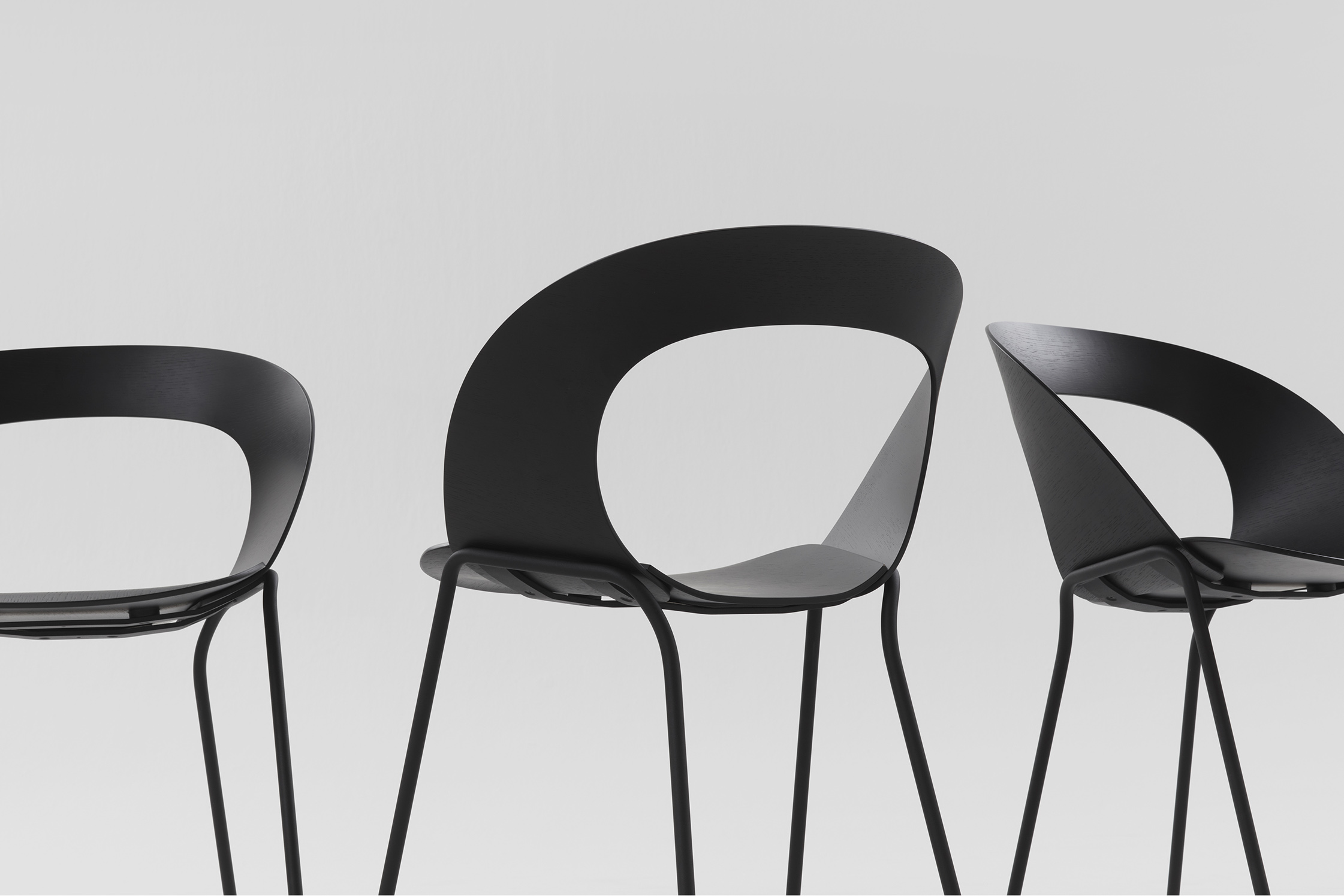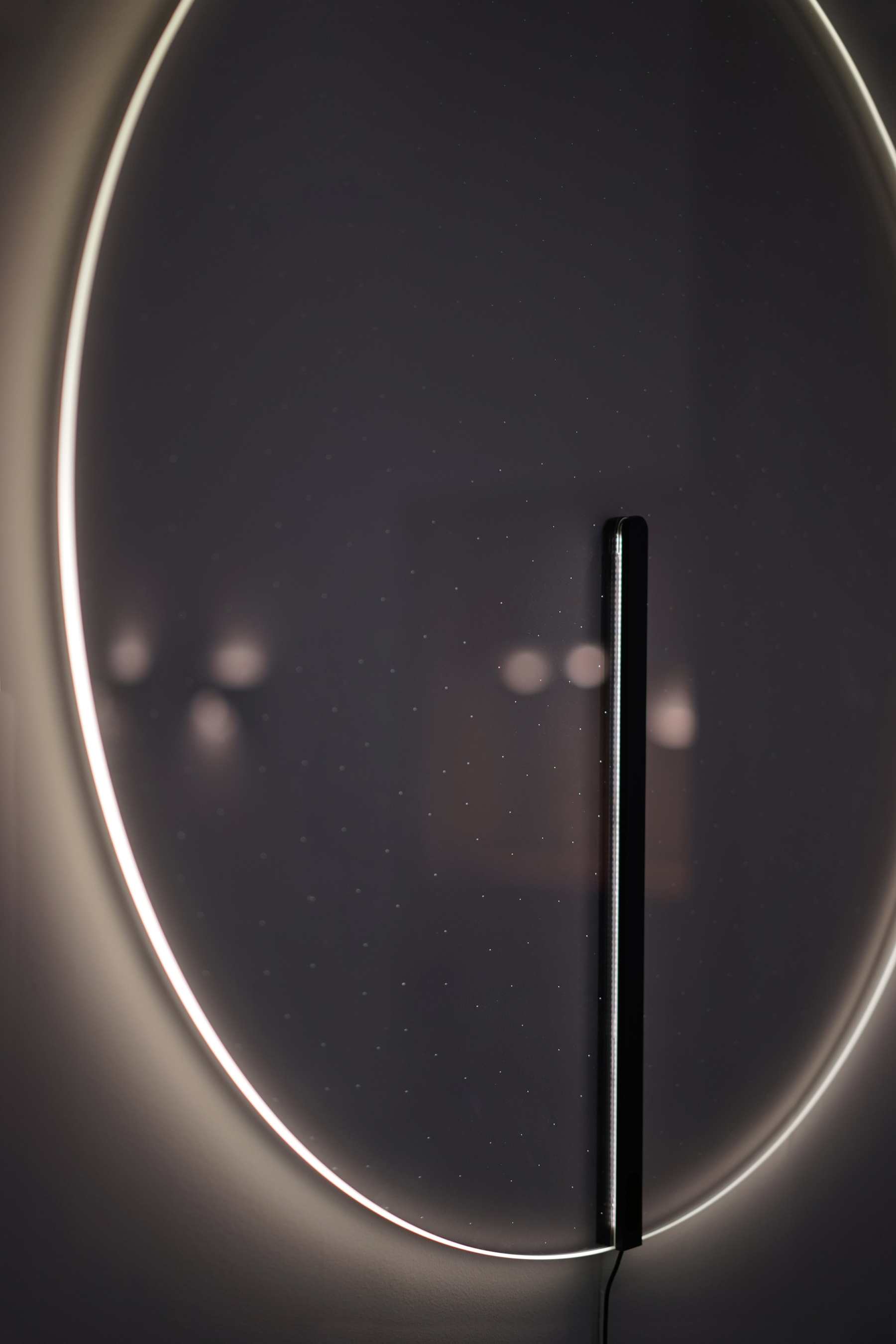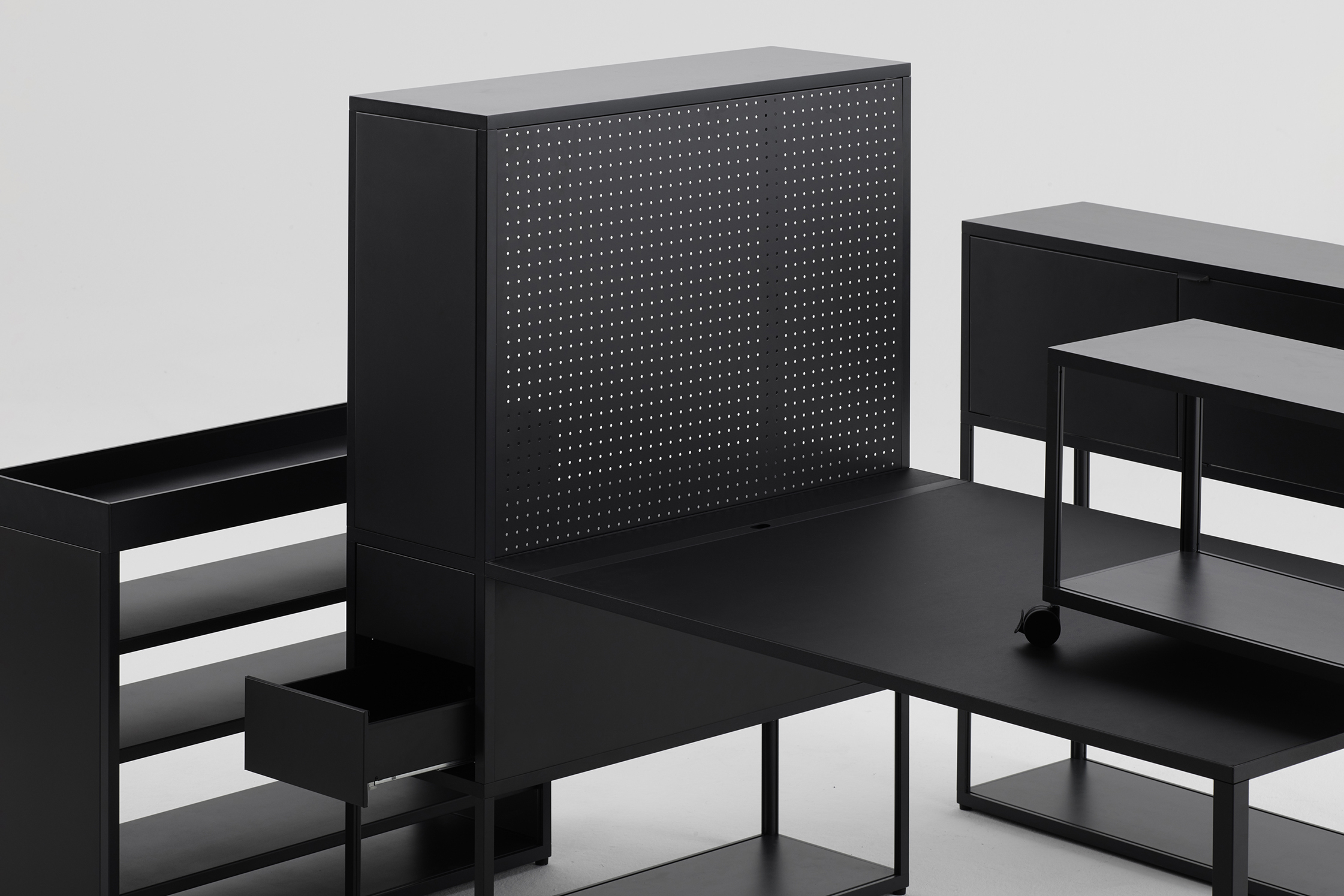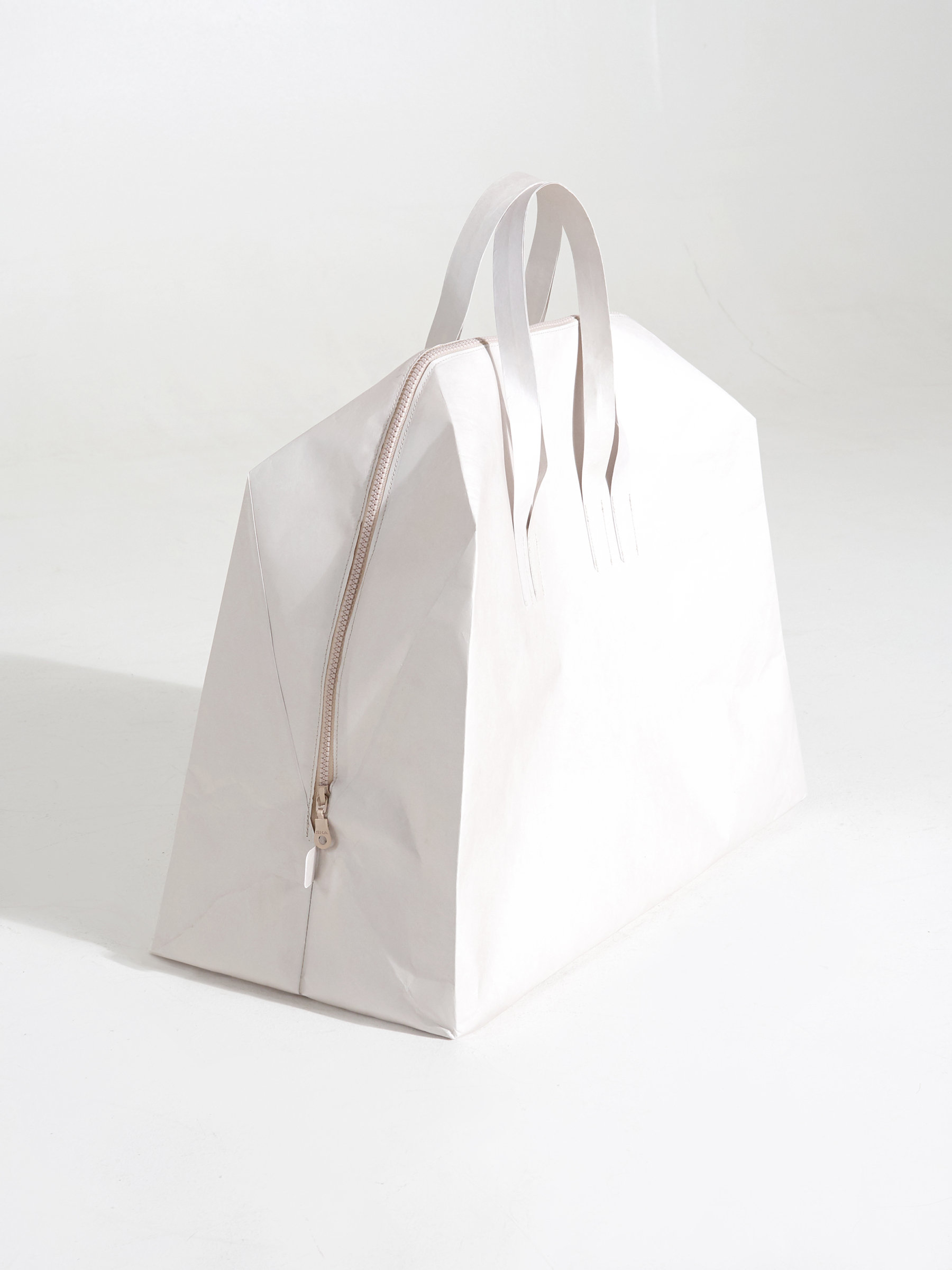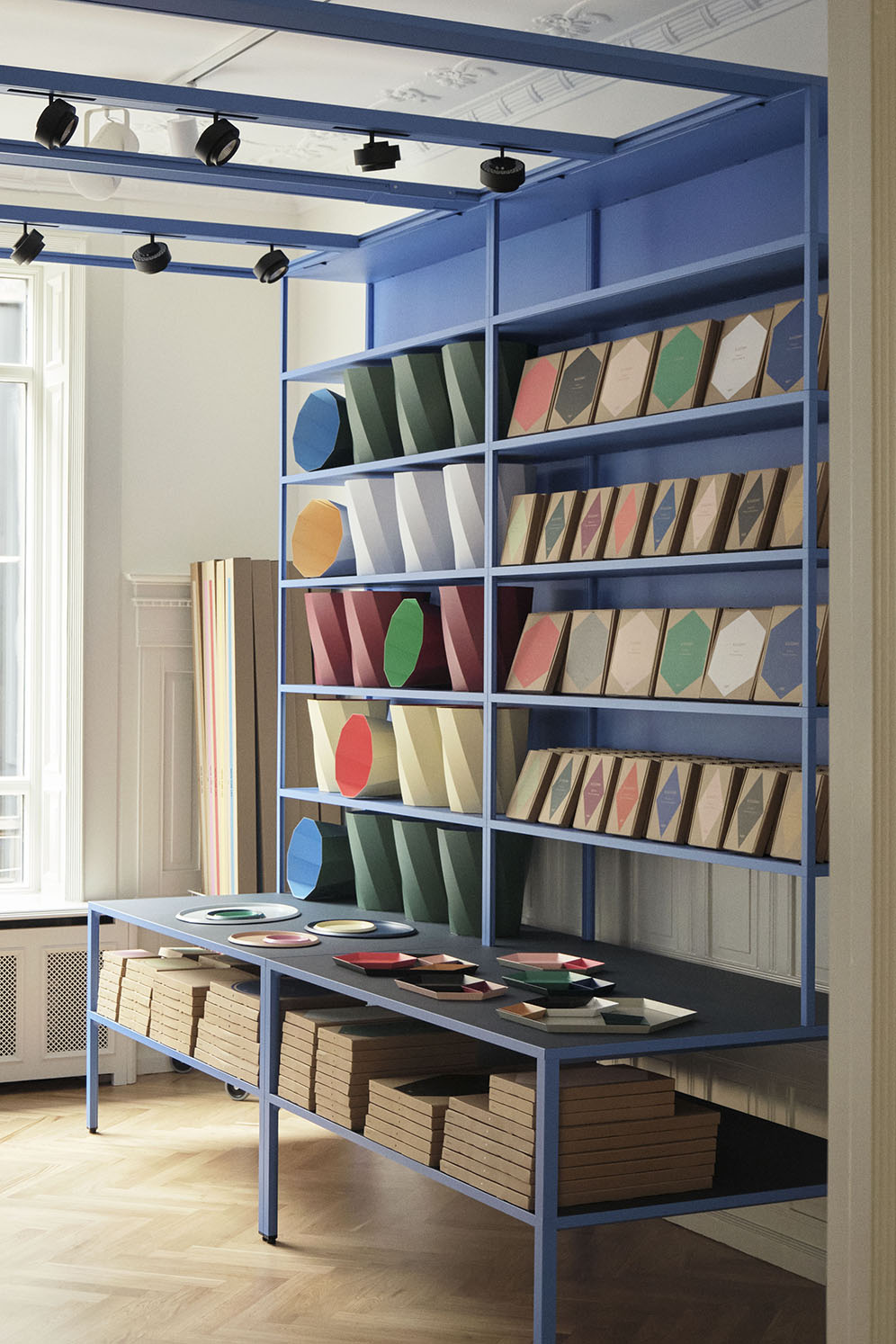Characterized by frankness, humor, and undeniable cachet, the prescient industrial design practice of Stefan Diez is a case study for the circular economy’s potential.
What if the disposable could give way to the steadfast? Extraction to replenishment? Depletion to regeneration? If the future belongs to those who dare to dream, Stefan Diez’s version looks bright. Working at the forefront of his generation, the industrial designer has been quietly realizing his vision for a circular economy, manifest in his iconic lighting and office fixtures for the likes of E15, Hay, Magis, Midgard, Thonet and Vibia, and in his teaching at the University of Applied Arts in Vienna.
Striking in its pleasing simplicity, the aesthetic appeal of Diez’s furniture belies the rigorous philosophy behind its creation: circular thinking that foregrounds repairability, recyclability, and reconfigurability. The son of a fourth-generation carpentry family, Diez commenced his formal design training under Richard Sapper at Stuttgart’s Academy of Fine Arts not long after the fall of the Berlin Wall. In the decades since, globalization, consumerism, and digitalization have profoundly shaped the foundations of his practice, as embodied by his 10 Circular Design Guidelines, published in January 2021.
Viewing circularity as the only viable response to earth’s finite resources and the ensuing need to redress their depletion, Diez takes a refreshingly buoyant approach to bending the prevalent linear model of production and consumption into a genuinely sustainable circular one. From his canalside studio in Munich’s Glockenbachviertel, he opens up on manufacturing for modularity, recoding systemic industry issues, and his take on the role of the designer: applying a different logic to bring about new forms of beauty.
This interview is part of “Circular Views”, an editorial series produced in collaboration with subscription-based furnishing company NORNORM. Spotlighting innovative thinkers, each interview explores a different dimension of circularity with the goal of raising awareness and fostering a creatively driven movement rooted in circular practices.

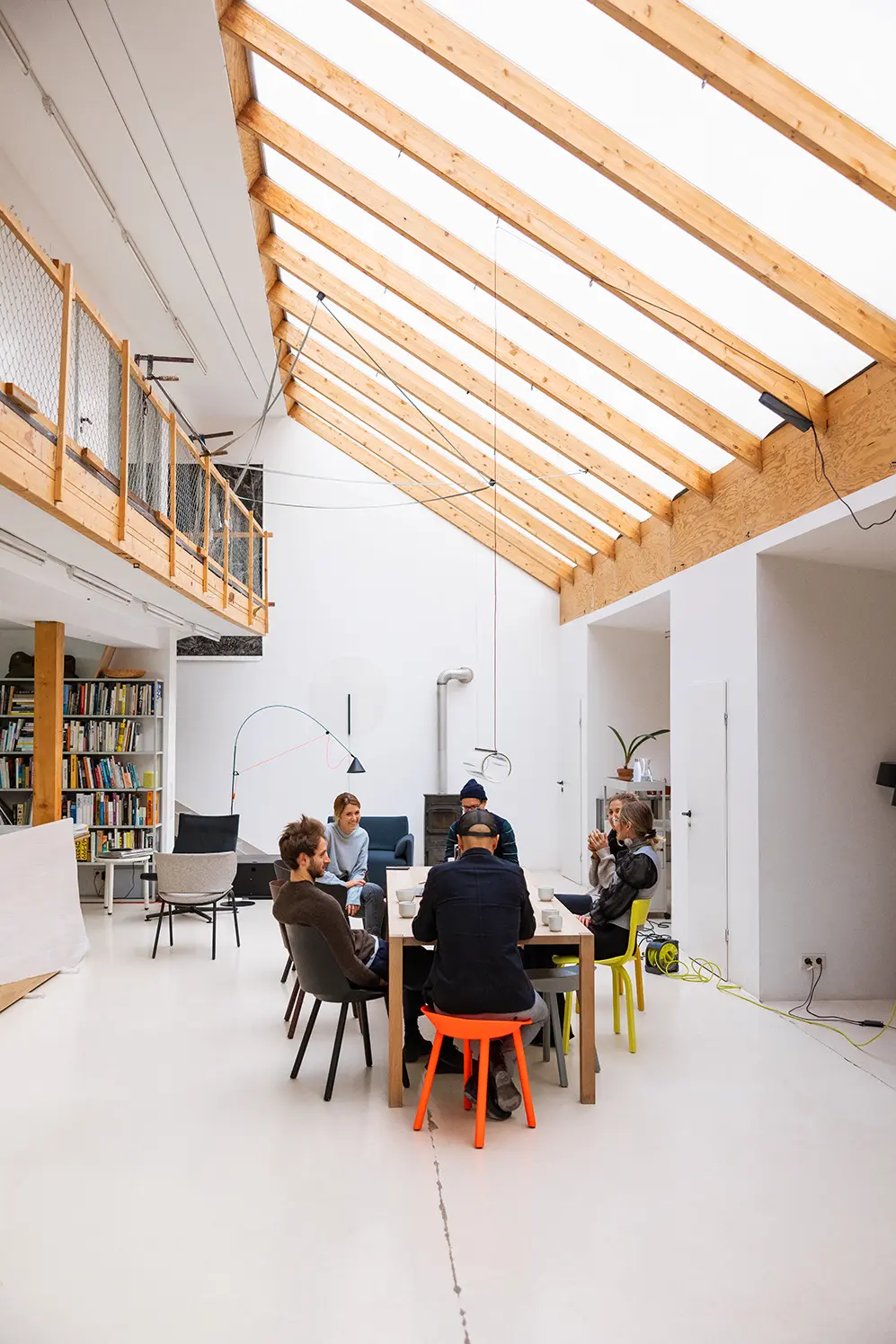

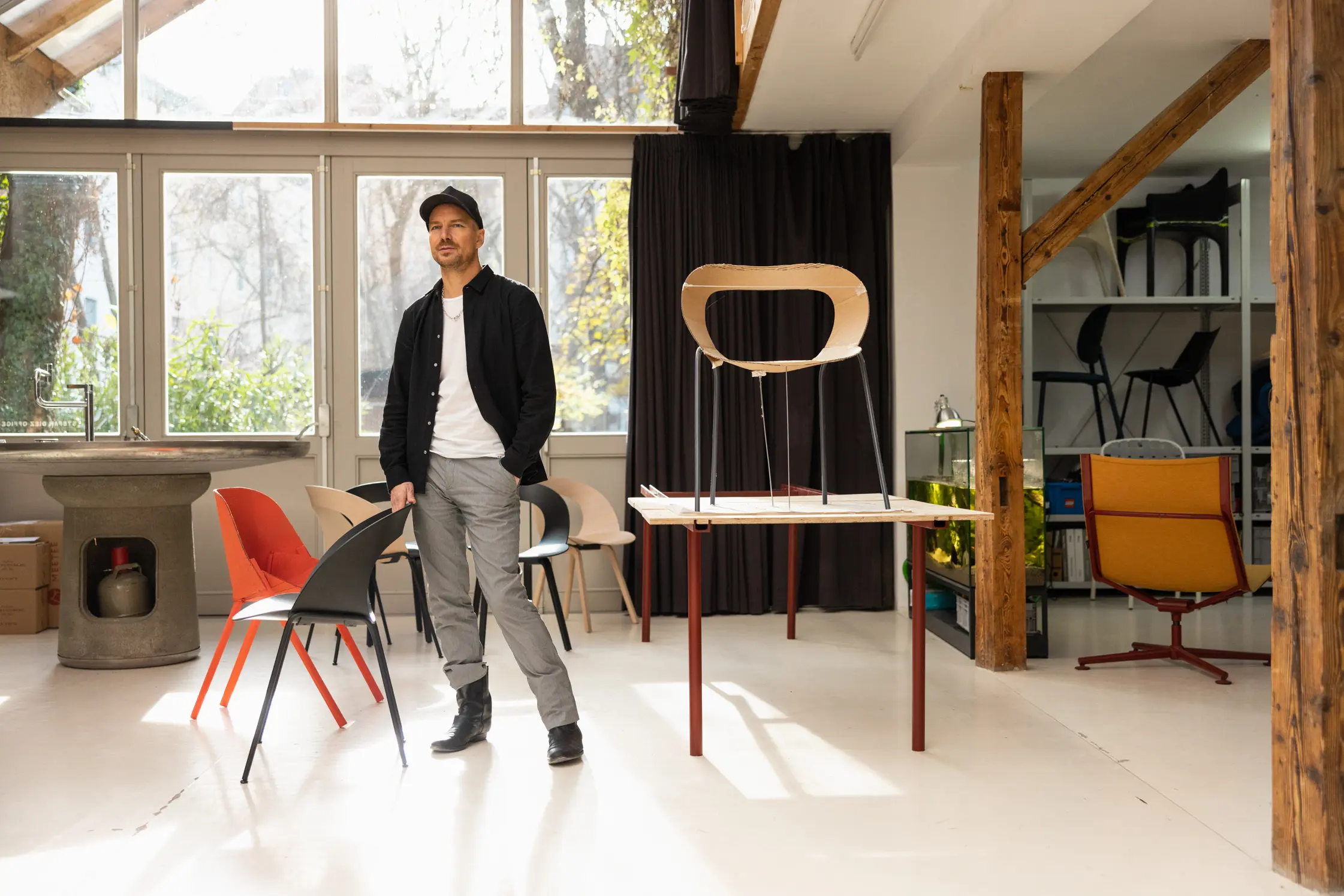
“I used the Circular Design Guidelines in my studio as a checklist to say, “Let’s not forget about the future aspect.”
-
What does the circular economy mean to you, and where does its potential lie?
The circular economy is based on the idea that resources are limited, and that they’re bound to a certain location on this planet. When we deal with these resources in a linear way, we’re just taking them from one place, processing them, and disposing of them in another. Eventually, this will lead to a lack of resources and subsequently to economic and ecological problems. Economic problems, because resources will become more and more expensive. People with fewer financial resources will suffer earlier on. And ecological problems, because some minerals, like phosphorus, are so precious they cannot easily be replaced.
In a circular economy, resources would not be disposed of, but rather be looped back into a circular material flow. The problem with the linear way of dealing with resources is how we deal with them, in particular at the end of [their] life. Once disposed of, resources are typically landfilled or incinerated. Whereas in a circular economy, resources would be reutilized.
Starting from this, I think that we designers can help to build the linear economy into a circular one. First of all, by respecting a few things like the way our objects are composed. We can use materials that are recyclable. We can take care that these materials are not put together in an inseparable way, which makes recycling very difficult. And we can prolong the lifetime of an object by anticipating the changing lifestyles of the people who use them.
Another thing we can do is to construct products in such a way that they remain repairable. It could be a lamp where the electric cord is broken or the LED is flickering. We have to take care that each of these components can be replaced directly by the user, instead of having to send in the whole lamp for repair. It’s about creating an important new aspect of a product: common standards and generic details that make them easier to maintain.

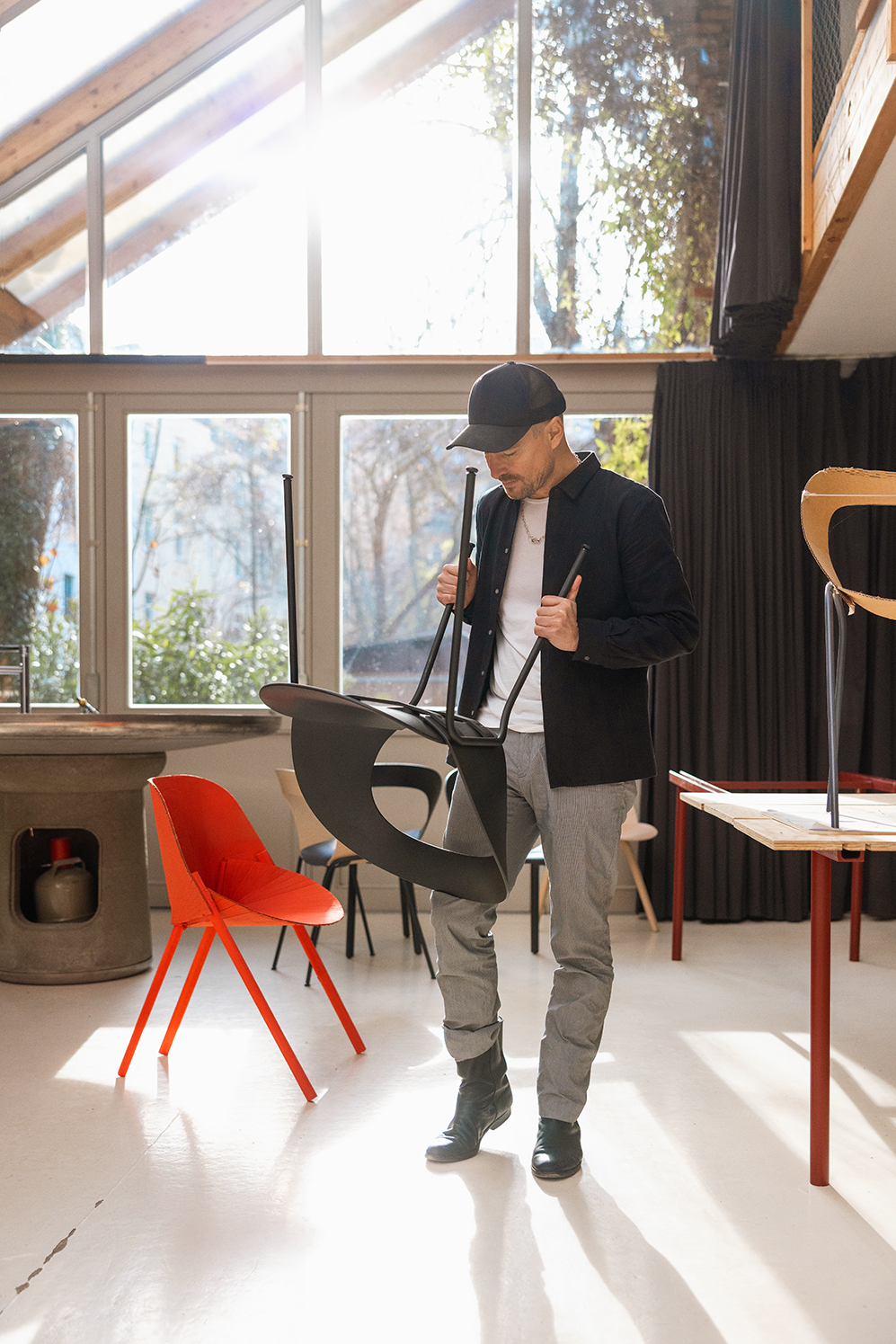
-
Can you expand on the major challenges facing the furniture production industry today? How can circular thinking address some of these?
Let’s be clear: in terms of the value chain from the manufacturer’s side, it makes sense if the lamp breaks after a few years, just at the moment where you think, “Oh yeah, it was a nice lamp, it didn’t last that long, but I’ll probably buy the same thing again.” On a structural level, we’re facing a lack of knowledge about how to construct things in the right way so that they’re repairable by their user. If you want to dispose of a sofa, for instance, you go with your pickup to deposit it in a junkyard. From there, it’s separated into combustible stuff and recyclable stuff. And a lot is incinerated nowadays.
Our challenge is that this is a completely established working system. If you want to change something in that system, not only do you have to find people who are willing to go with you in this experiment, but you’re also fighting the old system. It’s not in the interest of the existing structure to change it. The same goes for the retailers. It’s not in the interest of an online dealer to deal with repair problems. They make a simple kind of calculation. If it’s cheaper to shred things than investing human resources to unpack them and see if they’re still intact—they’re shredded.
Now, we have the advantage that consumers are aware of these kinds of things. That’s where I see my role as a designer, to constantly talk about them. We have the possibility to change. We’ve known for over 50 years that this has to be done. We have to do it now. I’m convinced that this change will create so much meaningful activity, and so much more happiness on this planet.


“We have the possibility to change. We’ve known for 50 years or more that this has to be done. We have to do it now. I’m convinced that this change will create so much more happiness on this planet.”
-
What are some of the transformative moments in your journey towards circular design practice? Have certain ideas or people been particularly influential on your thinking?
I was a design student just a few years after the Berlin Wall was torn down. The Iron Curtain fell, and 10 years later [in 1999] Europe had the Euro. It was an amazing, thrilling time. Suddenly, what felt like half of the planet was ready to be discovered. Neither China, nor Russia, nor the Czech Republic, nor Poland, Hungary, and the Baltic states had been accessible to the rest of the world. You could only visit them with very complicated visa regulations. The world had ended there, and then suddenly it was possible.
Alongside this, digitalization happened. It’s not only music that was put on a CD in the mid-80s, but it was, of course, also applied to all fields of our everyday business—mechanical drawings, how to operate a machine. To operate a machine in the old times, you had to have a machinist who knew how to push the buttons. Nowadays, it’s an email transferring a script from a computer in one country to another. At the beginning of the year 2000, that was the perspective for us as designers. In that setting, we were thinking about the global village, about global morals, and about diversity.
What happened, though, was completely different. The industry used globalization to sell old ideas from the ‘80s to new markets. There were so many people for whom these older ideas were still new. So why invent, why develop everything anew? After a few years, it was a shock to see what kind of products came on the market. They were done cheaply, without love, and in massive quantities. That created this wave of consumerism we’ve been facing the last 20, 30, 40 years.
Which brings me back to our role as designers. It’s on us to make this change towards something which is not dry-looking and painful. You don’t want to tell people, “You just have to use a little bit less butter on your bread,” or “just buy less”—that would be so sad. It’s about creating a vision for a future that is inspiring, positive.
Products for example might be rented instead of sold or returned instead of disposed of, which in turn could give us the freedom to exchange a product for another one. But for this to be possible, products need to be designed in a way that facilitates repair, reuse, refurbishment, and at last recycling. Because eventually, all products reach their end of life. But before that, products should be able to live long lives, with multiple users. And this is just one of many different possibilities for a circular future. It is our relation to products and ownership that is going to change, but not in terms of having to refrain from anything new, but in terms of changing or expanding our perception of what we define as “new”.

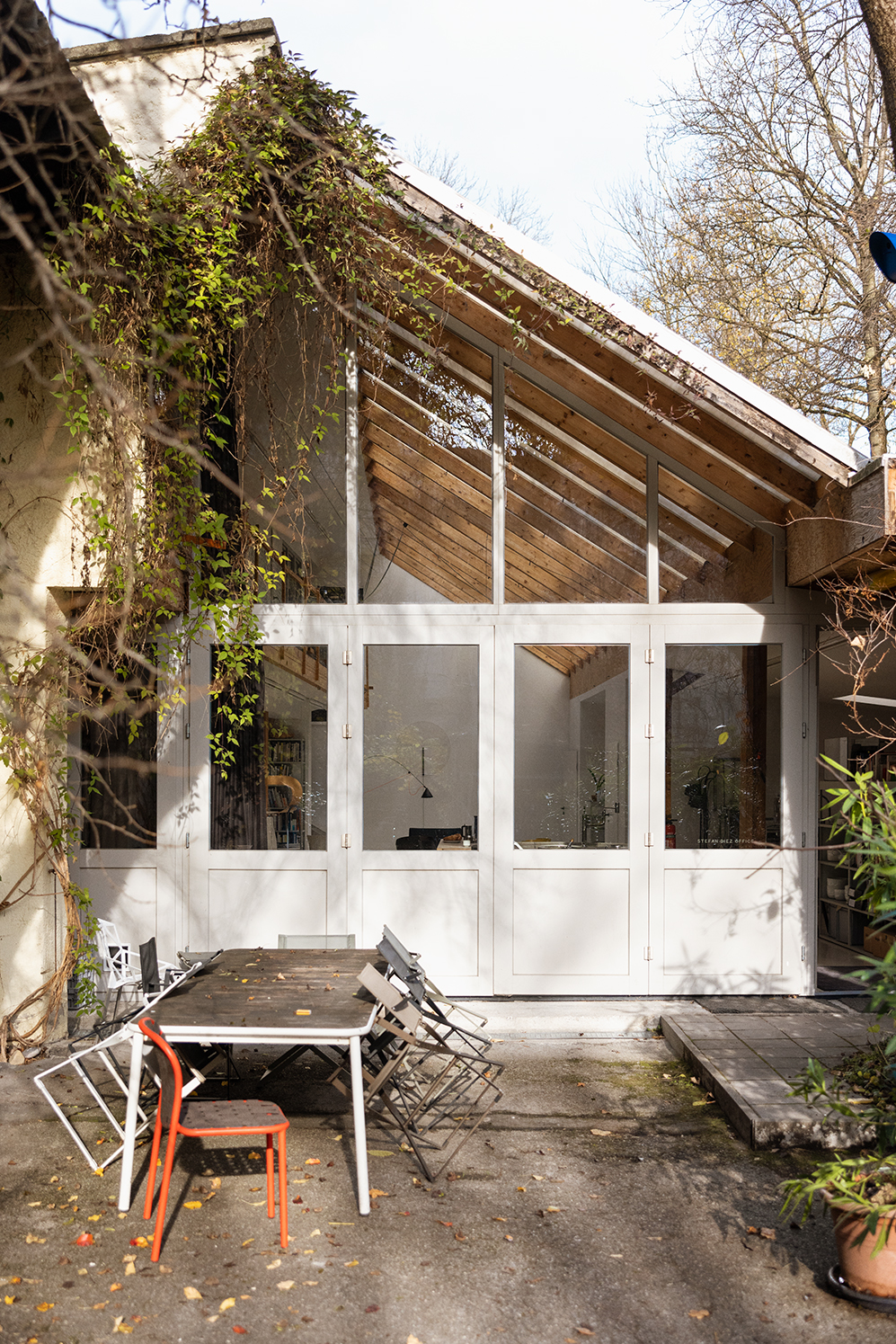
-
What role do aesthetic considerations play within the context of circular creation?
In my view, beauty is very much linked to a logic. What we perceive as beautiful often follows a certain understanding of nature. Looking at the way plants grow, or even how rocks are scattered in the sand— these kinds of things follow a certain kind of a logic of gravity, of fluidity. We as humans have anticipated that logic. If things are forced, or done in a wrong way, we perceive them as an irritation and something most would not see as beautiful.
In this context, it is our job—or it can be a very satisfying job—to somehow detect a new form of beauty by applying a new logic. I think it’s absolutely not difficult to make these new-generation products beautiful. You just have to explain why they are like that, and you don’t even have to use words to do so. In art, as in architecture and in design, we have semantics that make up our own language, and we can just apply that. And then we have to recode it.
-
What keeps you motivated to continue recoding? Where do you find inspiration?
It’s very often just watching people working. I love seeing professionals doing their thing. Like the barkeeper behind the bar, a cook in her laboratory or kitchen, people in a workshop or a factory. I perceive that as very peaceful. I also love to just try to do nothing. I go running, or just being outside walking—that’s another great source of inspiration, to just try to be in the state of getting everything out of your head. And then, the newspaper. I read two newspapers on a regular basis. I love reading the economics sections, actually. A lot. Economics is really interesting to me. I think it says a lot about human behavior and what moves people.
-
January 2021 saw the publication of your studio’s Circular Design Guidelines in the Frankfurter Allgemeine Zeitung, which offers a framework for how designers can contribute to transforming the global economic system. Could you share how they came to be?
In the beginning, it was only seven points. I made it ten because it was important for me to refer to the old rules [Ten Principles of Good Design] of Dieter Rams, which have been circulating since 1976. There are a lot of colleagues who had an influence on the way it’s written. It’s definitely a collection—a collage of common sense of our time and even quite old stuff, things that I already knew as a student. But if you make that knowledge public, and turn it into a manifesto, it takes on a totally different weight.
Ultimately, [the guidelines] came from a game of ping-pong between thinking and doing. I used these design guidelines in my studio as a checklist to say, “Let’s not forget about the future aspect.” Through our work, we found more and more aspects that helped us to create products suitable for the future. It is not like you sit with a blank paper and write 1 to 10. It was just like, “Ah, what did we think about the paper bag that time? Or why did we do this?”
If you’re not able to pack all these things into a personal advantage for the user, it’s not happening. Don’t count on the ethics of the people, just design products in a way that using them is fun, and making it joyful. And the advantages then come along with it. In the end, what is it about? It’s creating a relationship between the user and this object. It’s about the responsive kind of thing. I think we all have a strong link to things that are meaningful, that have been charged by accompanying our life.
The most interesting aspect of the process was officially committing oneself to a set of rules that you—under no circumstances—will break, because if you present a product and someone knows exactly what the pretext was, or the conditions under which you developed it, you’ve already given them the manual for how to criticize it. There’s a certain power that commitment unleashes, which makes me a little bit optimistic.



-
You’ve been Head of Industrial Design at the University of Applied Arts in Vienna since 2018. How has your teaching impacted your design, and vice versa?
I’ve always thought it’s a big responsibility to run a studio alongside teaching. Ultimately, it forces you to create a clear link between what you’re doing as a designer and what you’re teaching, as you’re obliged to take the future into consideration. Under no circumstances can you tell your students, “Look at me. I’m a successful designer. This is how you do it.” You’re constantly forced to anticipate the next 10, 15 years. That has strongly impacted my way of working because I try to do things now that I can also justify from a future perspective.
Something I really enjoyed doing with my students in Vienna recently was emptying the huge waste bins in front of our school. From this basic experience, we could draw so much motivation in formulating sub-projects for how to get rid of it. For instance, we found out that 20% of the waste is paper towels. After sorting kilograms of paper towels out of a waste bin, you see and feel that they’re wet. So the students get inspired—what can we do with used paper towels? Maybe we can make a sponge out of it. Or a mushroom farm. What I wanted to say with this example relates to trying to become naive again, to take two steps back, and seeing a situation more with the eyes of a child. Not to know everything already, not to immediately Google the statistics on what our trash is made of, but actually experiencing it.

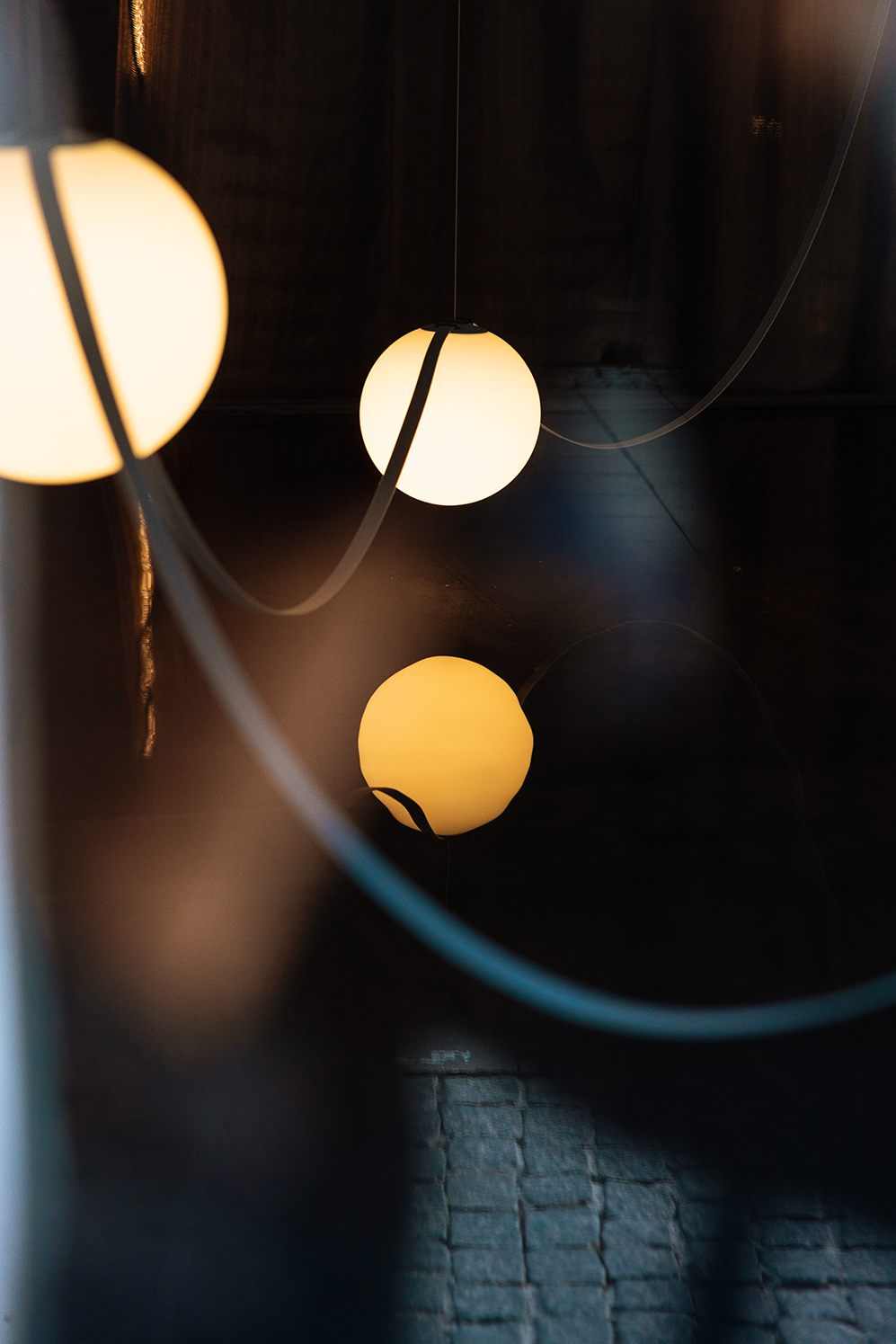

“In the end, what is it about? It’s about creating a relationship between the user and this object. I think we all have a strong link to things that are meaningful, that have been charged by accompanying our life.”

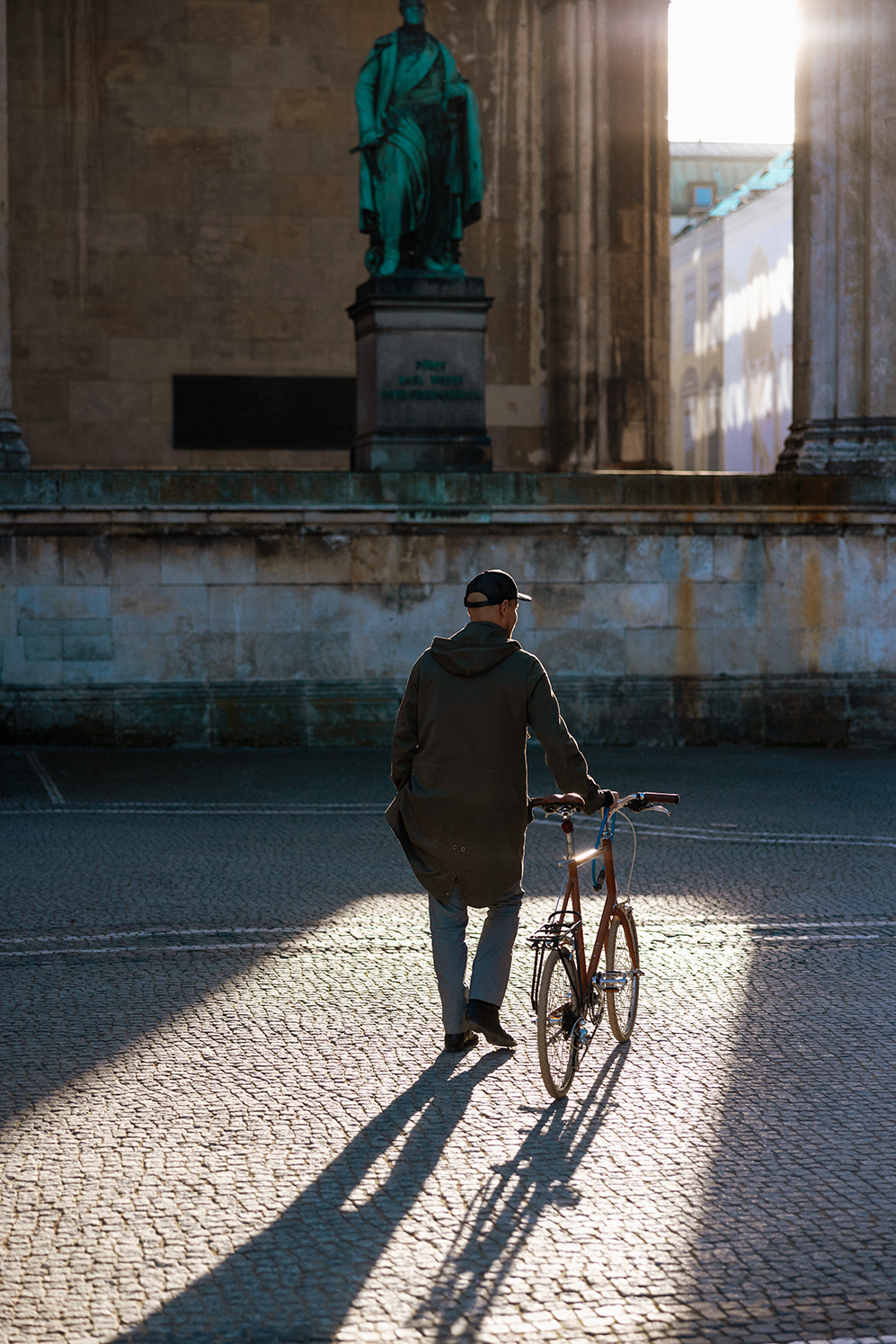
A list of things to read and watch
For those interested in delving deeper into design and circularity, we asked Stefan Diez to share his top recommendations:
Article
Authors
Marcel C. den Hollander, Conny A. Bakker & Erik Jan Hultink
About
This article describes the concept of design for a circular economy, explaining all aspects of design for circularity, which is not only about design for recycling but also about the importance of product integrity. (Subscription required).
Podcast
Author
Ellen MacArthur Foundation
About
Episode 25 of the circular economy show from the Ellen MacArthur Foundation. The Ellen MacArthur Foundation is the “go-to source” for information on the circular economy, and this particular episode sheds light on the current status and difficulties connected to circular design.
Guidelines
Author
Stefan Diez
About
These Circular Design Guidelines have been developed over the last few years on the basis of research, empirical experience in our studio and numerous discussions with colleagues. They’ve served us in the studio for years as a checklist and instructions on how products can be designed in the sense of a future circular economy.
Research
Author
Madeleine K. Wieser
About
Stefan supervised this Master’s thesis, which investigates circularity in the context of designing plastic furniture, and includes 19 interviews with designers, furniture manufacturers, and recycling experts.
This interview is part of “Circular Views”, an editorial series produced in collaboration with subscription-based furnishing company NORNORM. Spotlighting innovative thinkers, each interview explores a different dimension of circularity with the goal of raising awareness and fostering a creatively driven movement rooted in circular practices.
Our first protagonist, Stefan Diez, is a Munich-based industrial designer with a pioneering focus on circular everyday objects. Centered in his recently published Circular Design Guidelines, his creations range from iconic lighting to tableware to office fixtures for the likes of E15, Hay, Magis, Midgard, Thonet, and Vibia. Since 2018, Diez is also Head of Industrial Design at the University of Applied Arts in Vienna. To find out more about his current projects, follow Diez and Angewandte’s department of industrial design on Instagram or listen to his musings on the importance of design.
Along with Stefan Diez, this series features NORNORM founder Anders Jepsen and repair culture advocate Sophie Unwin. To learn more about design and innovation, be sure to also read our story about the founders of Crafting Plastic! and our interview with interior designer and architect Joana Astolfi.
NORNORM is a subscription-based furnishing model on a mission to define the future of how we work. NORNORM’s objective and vision is to apply a circular model to office interiors—and therefore promote the well-being of both employees, businesses, and the planet—by providing flexible, affordable, and inspiring work environments through using, and reusing, resources intelligently.
Interview: Anna Dorothea Ker
Photography: Ramon Haindl



